Health Beyond Borders
San Diego’s immigrant and refugee populations are among the largest in the country; at UC San Diego, their health is a priority.
Published Date
Article Content
This story is from the 2025 issue of Discoveries, a UC San Diego Health Sciences magazine.
When Neurosurgery resident Alexander Tenorio, MD, felt his pager go off in the Trauma Center at UC San Diego Health, the message he read was short but spoke volumes: “30-year-old male. Unstable spinal fracture after border fall.”
Five years into his residency at UC San Diego Health, the plight of patients with traumatic brain injuries after falling off of the U.S.–Mexico border wall had become an all-too-familiar part of Tenorio’s reality working in a Level 1 Trauma Center less than 30 miles from the border.
Between 2017 and 2019, the height of the border wall was raised from approximately 8–10 feet to as high as 30 in some sections. The consequences of this change for those attempting to cross the wall are harrowing.
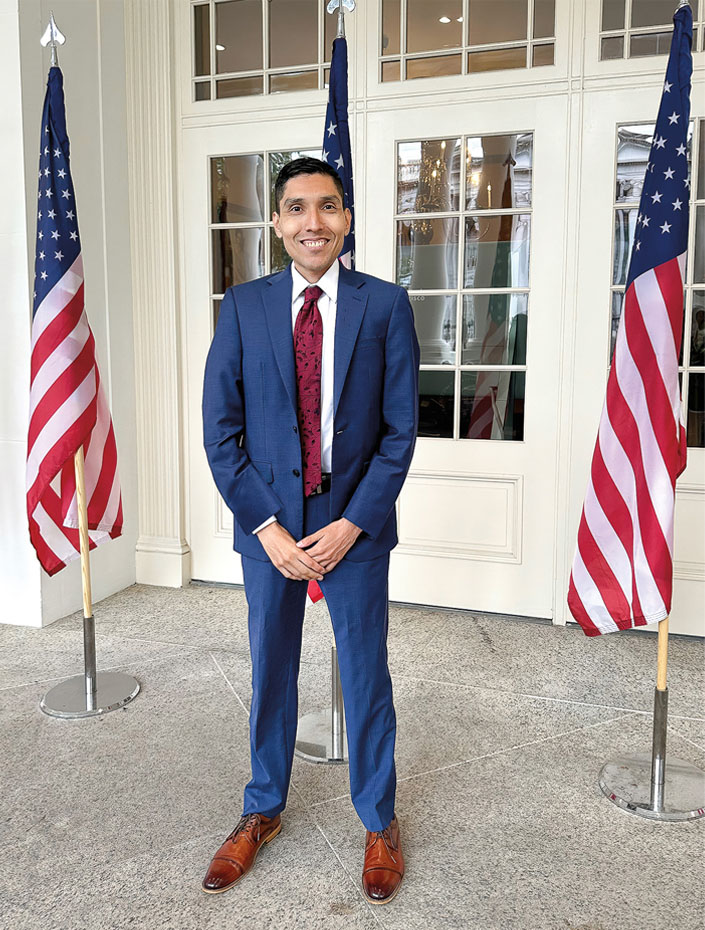
In a 2024 study published in the Journal of the American Medical Association (JAMA), Tenorio and other UC San Diego colleagues reported that between 2018 and 2022, half the patients in the Trauma Center at UC San Diego Health who received treatment for traumatic brain injuries after a fall were injured at the border. Patients who fell at the border required more neurological operations, experienced more neurological deficits at discharge and were less likely to be discharged into another health facility or return for follow-up care.
Border falls are just the tip of the iceberg.
In another study appearing in the Journal of Travel Medicine, Tenorio and his colleagues found that the number of deaths due to harsh land conditions along Californian migration routes increased by 760% following the height increase. Another group at UC San Diego reported in JAMA that drowning deaths of migrants in the Pacific Ocean off the coast of San Diego increased by 3,200% in the four years after the height increase.
For Tenorio, who grew up in an impoverished community in South Los Angeles and is himself the child of Mexican immigrants, these statistics are more than just a sad reality of his job; they’re a decisive call to action.
“I hear the same stories from my patients about why they left as I remember hearing from my neighbors and family at home,” he said. “This has gone far beyond a problem just within health systems. It’s a humanitarian crisis that needs to be rectified, starting with a comprehensive, integrated data system that can accurately track the injuries that result from migration.”
Tenorio has advocated for such a system on the witness stand in congressional hearings and has briefed local and federal legislators on the issue. However, this type of systemic change takes substantial time and political momentum to achieve.
For now, Tenorio remains a fierce advocate for patients and is also committed to diversifying the physician workforce.
“Only 5% of neurosurgeons are Hispanic, which makes it harder to provide care for Hispanic immigrants,” he said. “These patients are often hesitant to reach out and trust health care providers, so we need more physicians who look like them and speak their language.”
The California Border Health Research Group
With its close proximity to the border, UC San Diego has been committed to addressing disparities faced by immigrants for decades. For example, the Center for U.S./ Mexico studies was founded in 1980 to study the social and political relationships between the United States and Mexico. UC San Diego is also home to the U.S. Immigration Policy Center (USIPC), which supports research on a wide range of topics related to immigration, including immigrant health.

The California Border Health Research Group (CBHRG), which includes Tenorio and is contained within the USIPC, is a group of medical, public health and policy experts united in their mission to address challenges faced by people who suffer from injuries or other trauma along the U.S.-Mexico border. While some members of the CBHRG, like Tenorio, are early in their careers, others, like Linda Hill, MD, MPH, UC San Diego Herbert Wertheim School of Public Health and Human Longevity Science Distinguished Professor, have decades of experience in the field.
A Career of Compassion and Service
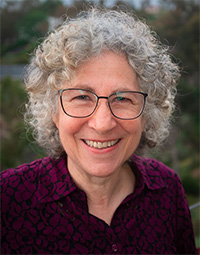
Linda Hill
Hill came to UC San Diego in the early 1980s to complete her residency in preventive medicine. In addition to being a regular research collaborator with Tenorio and other members of the CBHRG, she estimates that about 90% of the patients she sees in her clinical practice with San Diego Family Care are immigrants or refugees, a legal status given to a very small subset of immigrants coming to the U.S.
Hill’s work with immigrant and refugee communities also extends beyond San Diego Family Care. From 20042020, she served as the medical director for the California Department of Health’s Refugee Health Assessment Program, which was operated in collaboration with local resettlement agencies, including Jewish Family Services and Catholic Charities Diocese. At that time, San Diego was the largest receiver of refugees in the nation. Hill and her team completed standardized medical screenings to identify and treat health conditions of immediate concern upon refugees’ arrival. These national standards are recommended by the Centers for Disease Control and Prevention (CDC) and are essential for settling refugees into the community. They include providing initial prenatal care for women and vaccinations for children, as well as screening for anemia, lead exposure, growth and nutrition.
In the late 2010s, Hill was approached by San Diego County to help address a new crisis: a massive influx in asylum seekers crossing the border after changes to immigration policy during the first Trump administration. Unlike refugees, who are protected under international law, asylum-seekers have entered the country but are waiting to be granted legal asylee status. This process can take years, and it is extremely difficult for asylum-seekers to access health care and other services in the meantime.
“Families with children, pregnant women and others were coming in droves and gathering in southern San Ysidro, not knowing where to go or what to do,” said Hill. “It quickly became a very urgent situation.”
Hill helped establish the UC San Diego Asylum Seeker Medical Screening and Stabilization Program, which, in addition to seasoned clinicians, is also staffed by resident physicians at UC San Diego and other medical schools as well as students in UC San Diego’s Global Health Program. The program first conducted health screenings for asylum seekers at a shelter in Imperial Beach, and then later in San Diego.
“ Working with people from different countries has enriched my life in ways I never could have imagined. Every day is a learning experience, and I’ve been able to feel like part of the solution to the significant disparities faced by these groups.”
Hill still conducts screenings there to this day.
“Working with people from different countries has enriched my life in ways I never could have imagined,” she said. “Every day is a learning experience, and I’ve been able to feel like part of the solution to the significant disparities faced by these groups.”
Amplifying Voices
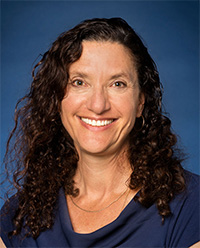
Janine Young
While some immigrants can access care from providers like Tenorio and Hill, others, such as unaccompanied minors, are not as fortunate. Children who are apprehended alone at the border have not had proper access to medical care. They are placed in detention centers immediately upon apprehension or, when space isn’t available, forced to wait in open-air encampments until there’s room. Once in custody, medical protocols for immigrant children are inconsistently applied and frequently fail to diagnose both physical and mental health conditions.
To address these issues, Janine Young, MD, professor and division chief of Academic General Pediatrics, Newborn Medicine and Developmental-Behavioral Pediatrics at UC San Diego School of Medicine, recently published recommendations in the American Journal of Public Health for the federal government to improve the health and safety of unaccompanied immigrant children, including strategies to better diagnose and treat common health conditions and guidelines for how to better support immigrant children upon release to U.S. sponsors. Young is a member of the CBHRG alongside Tenorio and Hill.
“We need to figure out how to take care of patients who are newcomers, especially children, in an evidence-based and trauma-informed way,” she said. “No matter who the person is, they’re a human being and deserve to be cared for.”
In addition to advocating for better access to health care for immigrant children, Young has also spearheaded initiatives to help immigrants of all ages have equitable access to medical interpreters, which she asserts is critical to providing the best care possible.
“It is essential to communicate with patients in their own language, or at least try,” said Young, who is fluent in three languages. For widely spoken languages, health systems can bridge the language gaps between doctor and patient with trained medical interpreters. However, for rare languages, an interpreter may not be available.
“I’ve been in situations where the patient is from Guinea Bissau and speaks Pulaar and I have a 6-year-old interpreting for me because there’s nobody else available who speaks that language,” said Young.
Young is working with the CDC’s National Healthcare Safety Network to develop new hospital system requirements for patients’ primary language to be entered into electronic health records, even for rare languages that are often relegated to an “other” category — if language is recorded at all. This would help hospitals plan in advance for patients who require a rare language interpreter. Young also helped create the first abridged language dictionary for hospitals to use in their data collection, which contains hundreds of languages and will be rolled out by electronic health record vendors starting in 2025.
“You can’t be competent in every language and every culture,” said Young. “But we have plenty of opportunities to make our health care systems more sensitive and supportive.”
The Displacement and Health Research Center
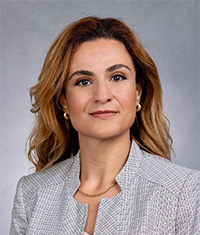
Tala Al-Rousan, MD, MPH
While the CBHRG has a local focus due to the proximity of UC San Diego to the U.S.–Mexico border, displaced populations all over the world experience health disparities. The Displacement and Health Research Center, founded and led by Tala Al-Rousan, MD, MPH, assistant professor at the Herbert Wertheim School of Public Health, seeks to understand the impacts of global displacement on all aspects of human health. The center also focuses on mentoring the next generation of displacement health researchers, with a current cohort of 55 trainees, including undergraduate, medical and public health graduate students.
To Al-Rousan, who grew up in a small border town in Jordan, this mission is not just an academic exercise, but a personal imperative.
“We see displacement as a human experience, not something limited to any particular group,” she said. “It’s also been severely neglected in terms of evidence production.”
The role of climate as a driver of displacement and its associated negative health outcomes is an area of particular interest for Al-Rousan and the other researchers at the center, many of whom are immigrants themselves. Climate change exacerbates existing health disparities and also creates new ones, such as injuries and fatalities from extreme weather events and negative effects on psychosocial health and well-being.
To explore these factors, Al-Rousan and her colleagues are using Google Earth data to reveal links between climate hazards and health outcomes for Syrian refugees resettled in San Diego. One of their recent studies identified extreme heat and cold, exposure to dust and exposure to political conflict as drivers of hypertension, as well as other adverse health outcomes such as poor mental health and illness from contaminated water.
“ Our work is causing the NIH to rethink how they approach refugee health, and that’s a huge win for us. I also love encouraging more researchers to enter the field, which is a great ripple effect as well.”
This call for funding is not just an abstract wish; it’s a concrete need demonstrated by the center’s research. One of the most impactful studies to come out of the center, according to Al-Rousan, is an analysis, published in JAMA, of NIH funding for refugee health research between 2000 and 2020. The researchers found that despite the fact that the U.S. has historically settled more refugees than any other country, only 78 of the 1.7 million grants funded during the study period were for refugee health projects.
Since this study was published, it has been used within NIH to guide new policies and practices to increase the number of refugee health grants awarded, including soliciting this type of research directly in calls for funding.
“Our work is causing the NIH to rethink how they approach refugee health, and that’s a huge win for us,” said Al-Rousan. “I also love encouraging more researchers to enter the field, which is a great ripple effect as well.”
The Refugee Health Unit
The Refugee Health Unit (RHU), founded in 2017 and contained within the Center for Community Health at UC San Diego Altman Clinical and Translational Research Institute, is a prime example of supporting immigrant and refugee health through direct community engagement.
“Our communities come here traumatized by experiences in their home countries and then have to learn to navigate a very complex health system,” said Amina Sheik Mohamed, MPH, founder and director of the RHU, who is herself a refugee from Somalia. “Our goal is to make this process easier by working with organizations trusted by the community.”
The RHU partners directly with local ethnic community-based organizations to promote health and well-being in the community from the inside out. One cornerstone of the RHU’s work is the San Diego Refugee Communities Coalition (SDRCC), an alliance of 12 organizations representing diverse ethnic groups from across the world. The RHU acts as a liaison, helping the individual member groups put initiatives into action, including identifying funding opportunities and building long-term capacities to help these organizations become more self-reliant.
“Small nonprofits can’t compete with larger organizations when it comes to resources, which has a detrimental effect on what they’re able to accomplish,” said Sheik Mohamed. “Funders hear us better when we speak together as a collective.”
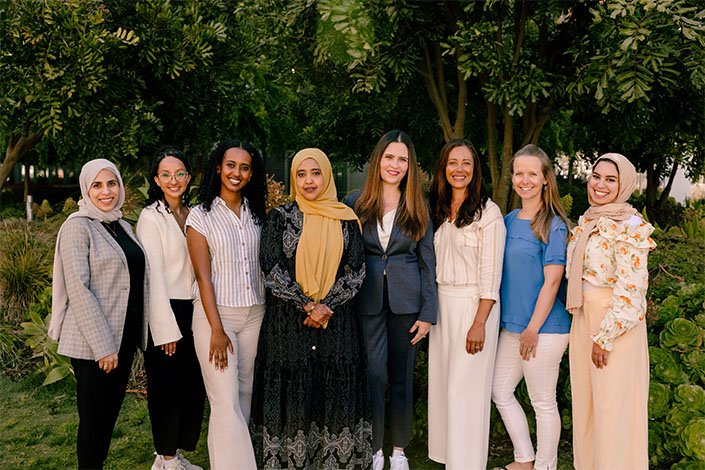
By working closely with local ethnic community-based organizations (ECBOs), the Refugee Health Unit is focused on helping refugee communities overcome health inequities. The Refugee Health Unit team is (from left to right) Reem Zubaidi, Segen Zeray, Ruth Tadesse, Amina Sheik Mohamed, Blanca Meléndrez, Reba Meigs, Sarah Vicente and Asmaa Deiranieh. Photo by Kyle Dykes
Building on its successes in San Diego, the RHU secured over $20 million in funding from the California Department of Social Services, leveraging federal resources from the Office of Refugee Resettlement. This funding supports the replication of the SDRCC model statewide. Through the Afghan Refugee School Impact (ARSI) and Afghan Youth Mentoring (AYM) programs, RHU oversees the implementation of four regional coalitions across California, engaging 56 ethnic-led community-based organization partners. These coalitions provide culturally responsive academic and social services to improve access to resources and well-being for more than 10,000 Afghan youth, parents and family members. Additionally, RHU has conducted over 370 training sessions, consultations and workshops to support program delivery and enhance the organizational capacity of its partners.“We respond to the needs of the community as they emerge, so we’re always making sure what we do works for the community we support,” added Sheik Mohamed.
The RHU is now looking forward to expanding the scope of their capabilities, which they’ll be able to do with the support of an unrestricted $350,000 award given by the James Irvine Foundation to both Mohamed and her colleague, Blanca Meléndrez, MA, executive director of the Center for Community Health. The SDRCC model established through the RHU is already being replicated in three additional regions across the state through the ARSI/AYM program. With this additional funding, they hope to establish a replicable framework for the RHU’s activities to further expand their reach.
“The Refugee Health Unit is the result of 30 years of slowly built trust from the community, and it epitomizes the idea that communities possess the inherent power to transform their health outcomes, provided they have the resources and support necessary to do so,” said Meléndrez. “What we’ve done so far is just the beginning of what we’re hoping to accomplish.”
Share This:
You May Also Like
Stay in the Know
Keep up with all the latest from UC San Diego. Subscribe to the newsletter today.





